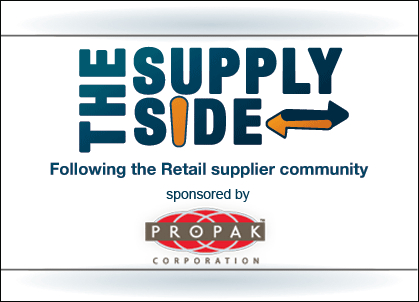The Supply Side: Wal-Mart testing watermark barcodes
by October 26, 2016 12:56 pm 1,449 views

Editor’s note: The Supply Side section of Talk Business & Politics focuses on the companies, organizations, issues and individuals engaged in providing products and services to retailers. The Supply Side is managed by Talk Business & Politics and sponsored by Propak Logistics.
–––––––––––––––
Wal-Mart Stores has partnered with Oregon-based Digimarc Corp. to test a barcode invisible to the consumer and wrapped around a product package, enabling the object to be scanned from a distance, without rotating it to look for a code.
In July 2015, Wal-Mart CEO Doug McMillon posted on Instagram a photo of a Great Value-labeled product on a scanner with the caption: “Walmart’s Lab 415-C, our associates are working on some incredible innovations. Technologies like invisible watermarking could transform the way our customers check out.” Walmart Labs spokesman Bao Nguyen said the retailer has been working with Digimarc on the technology.
“We take the same information that’s inside that typical barcode and replicate it hundreds of times across the package,” said Larry Logan, Digimarc’s chief marketing officer. “Think of a postage stamp that’s replicated across all sides of the package — except it doesn’t look like that. There’s no discernible characteristics like the zebra stripes. To a consumer, it’s imperceptible. It’s incorporated into the artwork of the label.”
Logan says the new barcode has the potential to make supply chains and retailers more efficient and also help the customer by providing additional product information and content – including the brand’s story – while increasing convenience. Logan said the technology can increase convenience for the consumer in many ways, including opening the door for being able to scan products through the act of placing the item in their shopping cart.
At the same time, the ability to scan the product from a distance on any side increases efficiency within the supply chain system and in the store, with potential applications for in-store detailing and loss prevention, Logan said.

Retail industry data from the past few years cast doubt on customers’ willingness to scan items in the store. A 2012 eMarketer study showed just 9% of adults in the U.S. used a QR code in the past year, and the research projected that adoption would continue to be slow.
However, Logan said the all-over barcode is more convenient than QR codes, because consumers don’t have to turn the package around, looking for a code. And, he says the Digimarc Barcode is a solution consumers want.
Customers “are demanding” more product information from in-store packaging, he said, pointing to a 2015 survey that showed 78% of U.S. adults wanted more information than what appears on a product’s packaging to determine whether they will purchase it. Three-fourths of those consumers were likely to research and purchase online when they don’t get the information they need from the package.
“That number jumps to 87% for millennials,” Logan said.
The Digimarc-commission poll looked at 2,000 U.S. adults and was conducted by Harris Interactive of New York City.
An increasing amount of information is required on packaging. The all-over barcode can free up space on the package, or the company can place different content on each side or area of the package, Logan said.

It could take a while for the Digimarc Barcode to be broadly adopted within the retail industry, if it happens at all. However, earlier this month, checkout scanner company Honeywell International of New Jersey announced that its scanners have the option of Digimarc Barcode capabilities. And a few consumer packaged goods companies near Digimarc’s headquarters in the Pacific Northwest have adopted the technology, and Wegmans Food Markets of Rochester, N.Y., has adopted the technology for its private-label brand.
One potential hurdle in the widespread use of Digimarc codes is the upfront costs.
Digimarc Barcode costs $400 per SKU, $50 for a licensing fee related to the content delivered to the consumer and $350 for the pre-press company to “enhance the graphics” on the package, Logan said.
The Supply Side series focuses on the companies, organizations, issues and individuals engaged in providing products and services to retailers. The Supply Side is managed by Talk Business & Politics and the Northwest Arkansas Business Journal, and sponsored by Propak Logistics.
